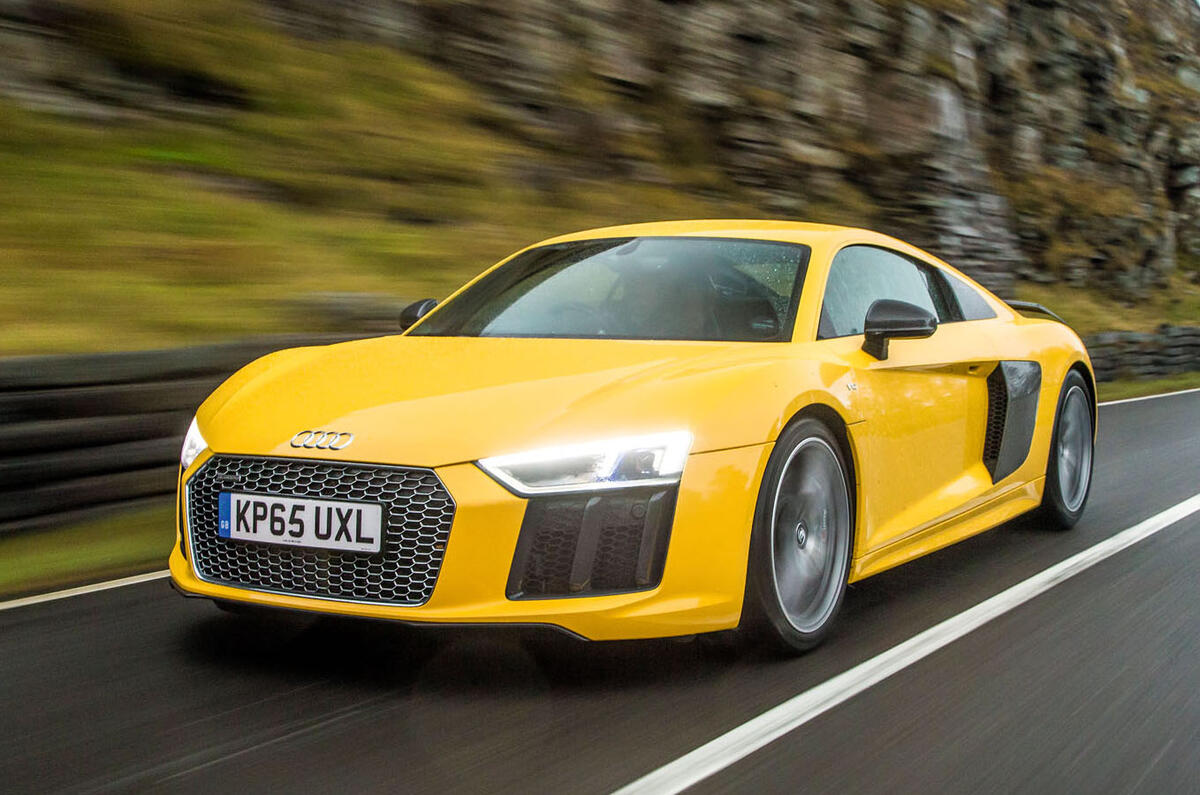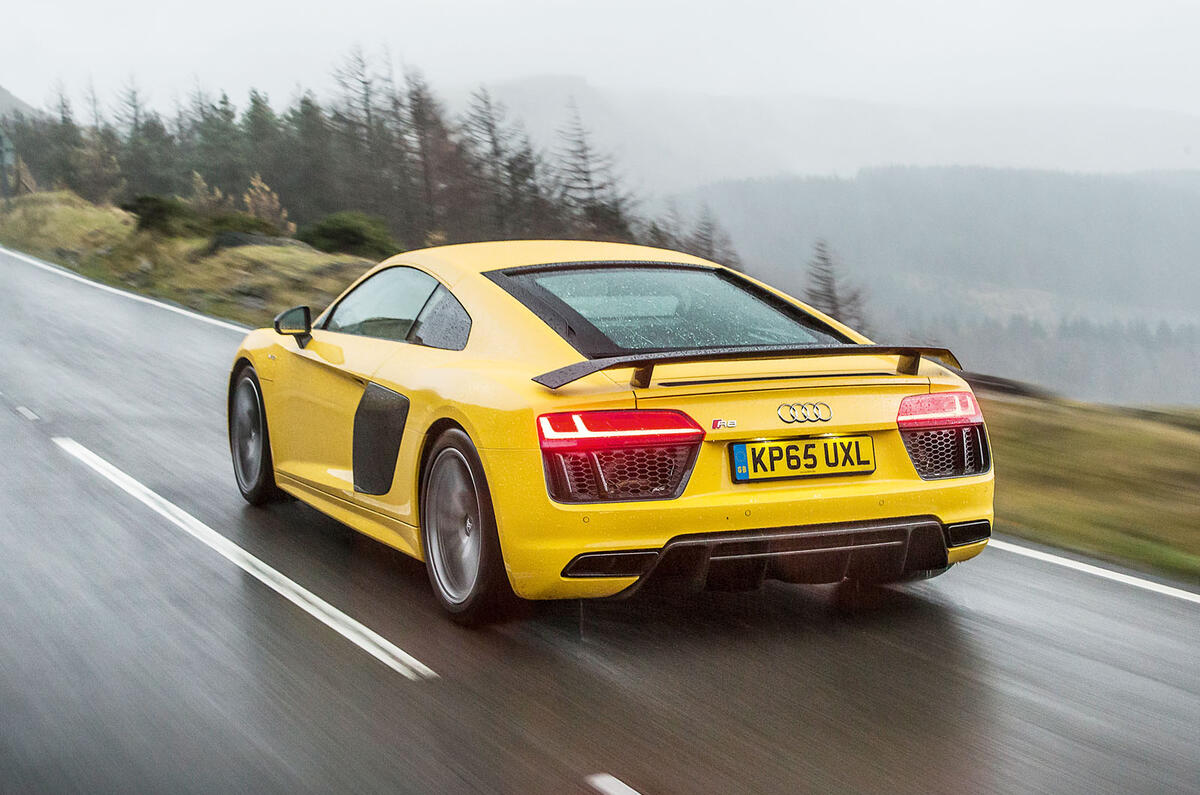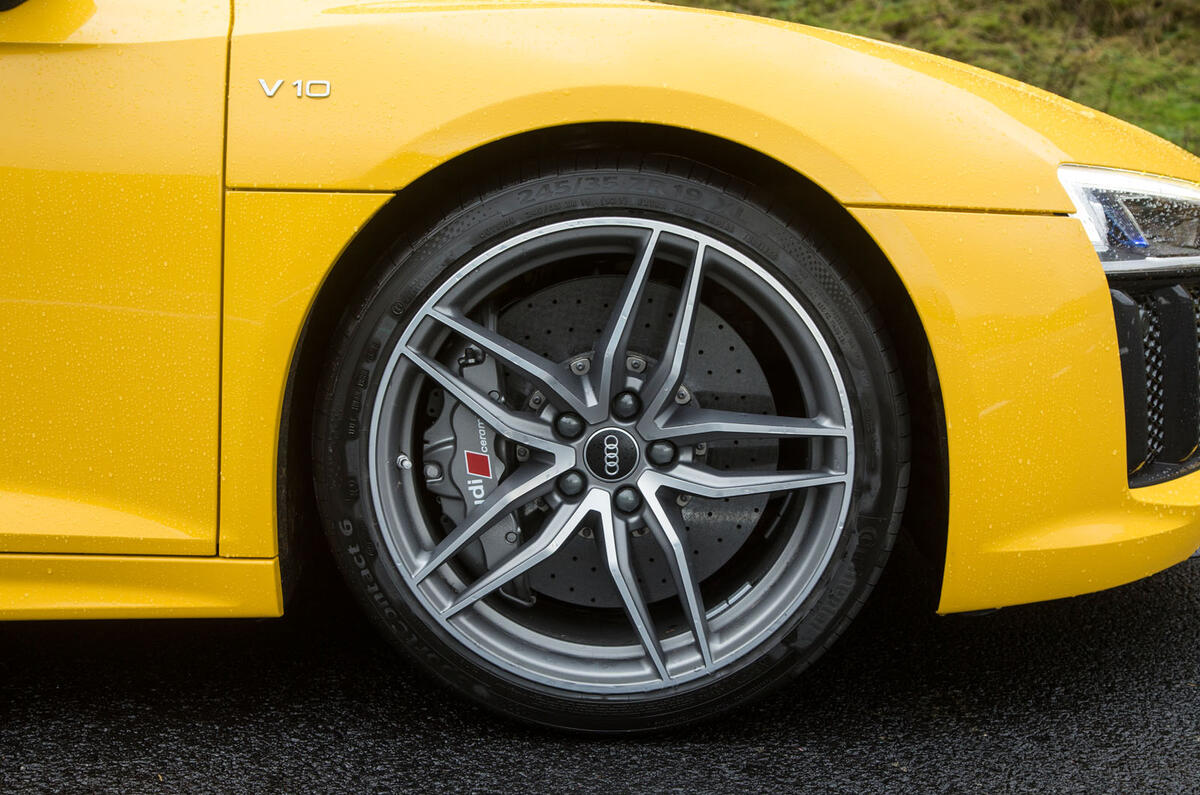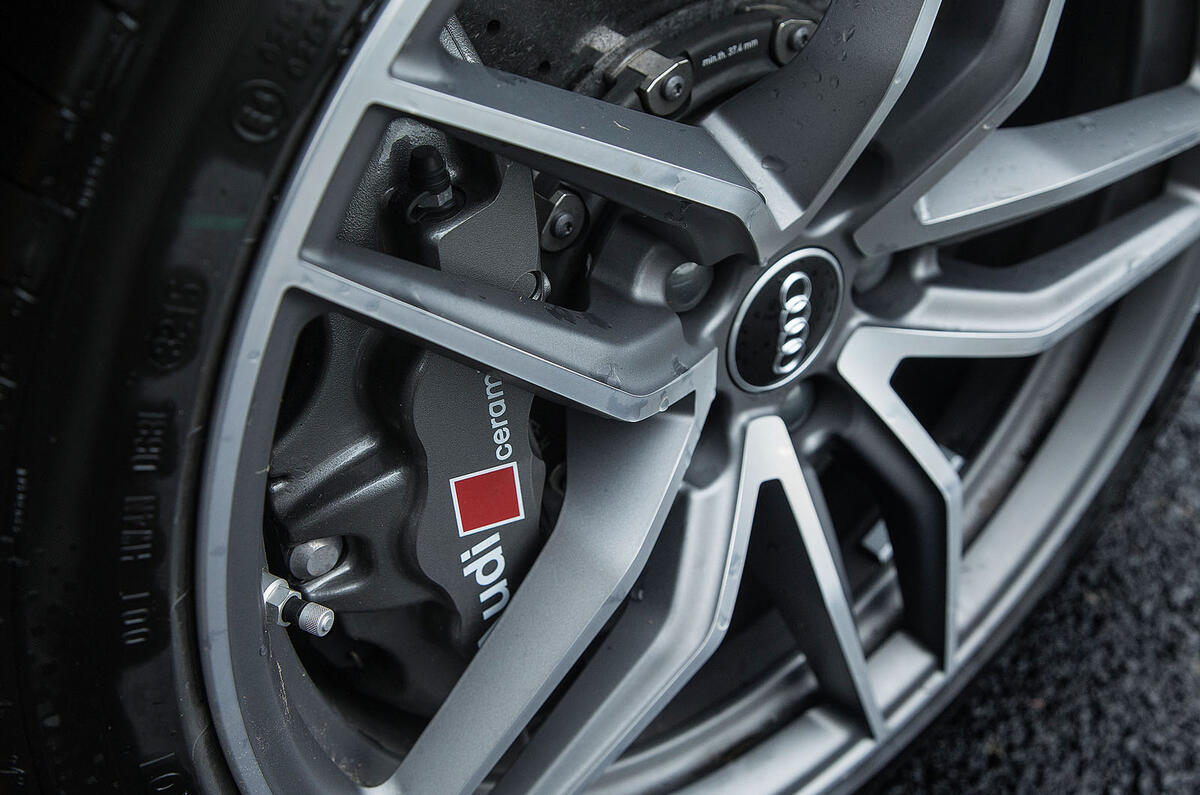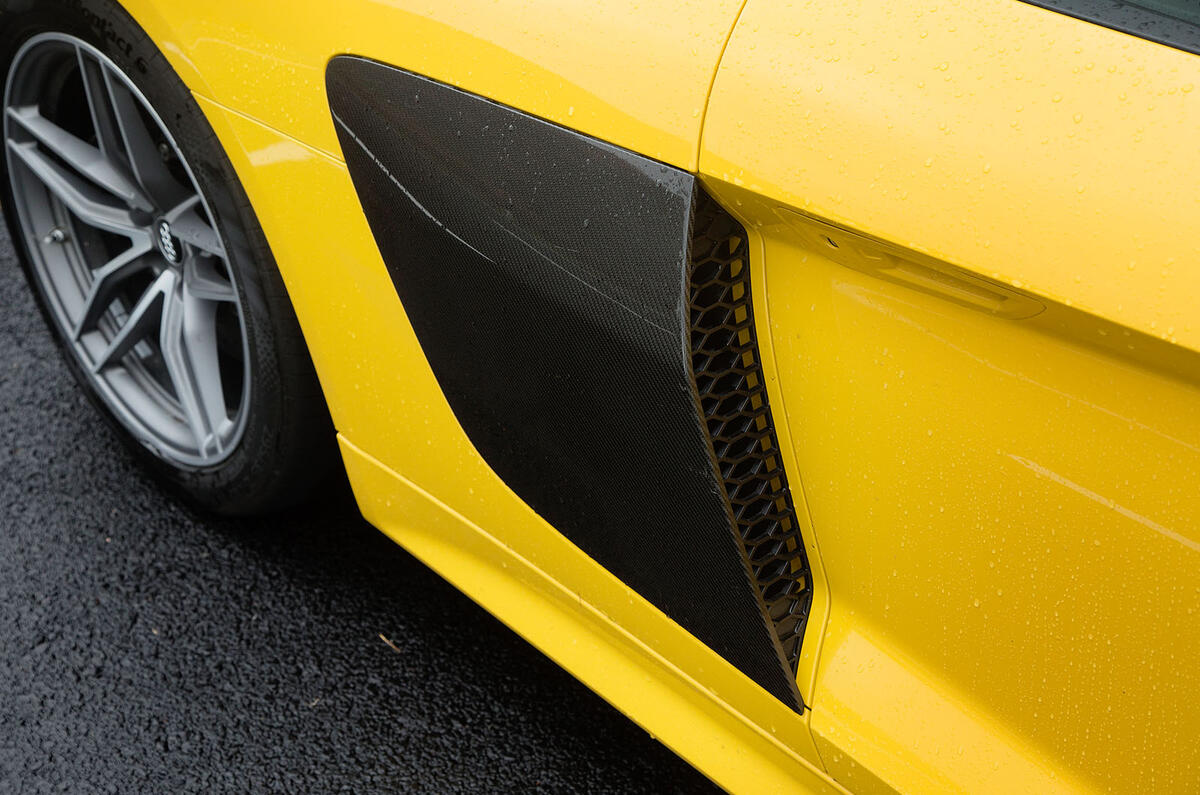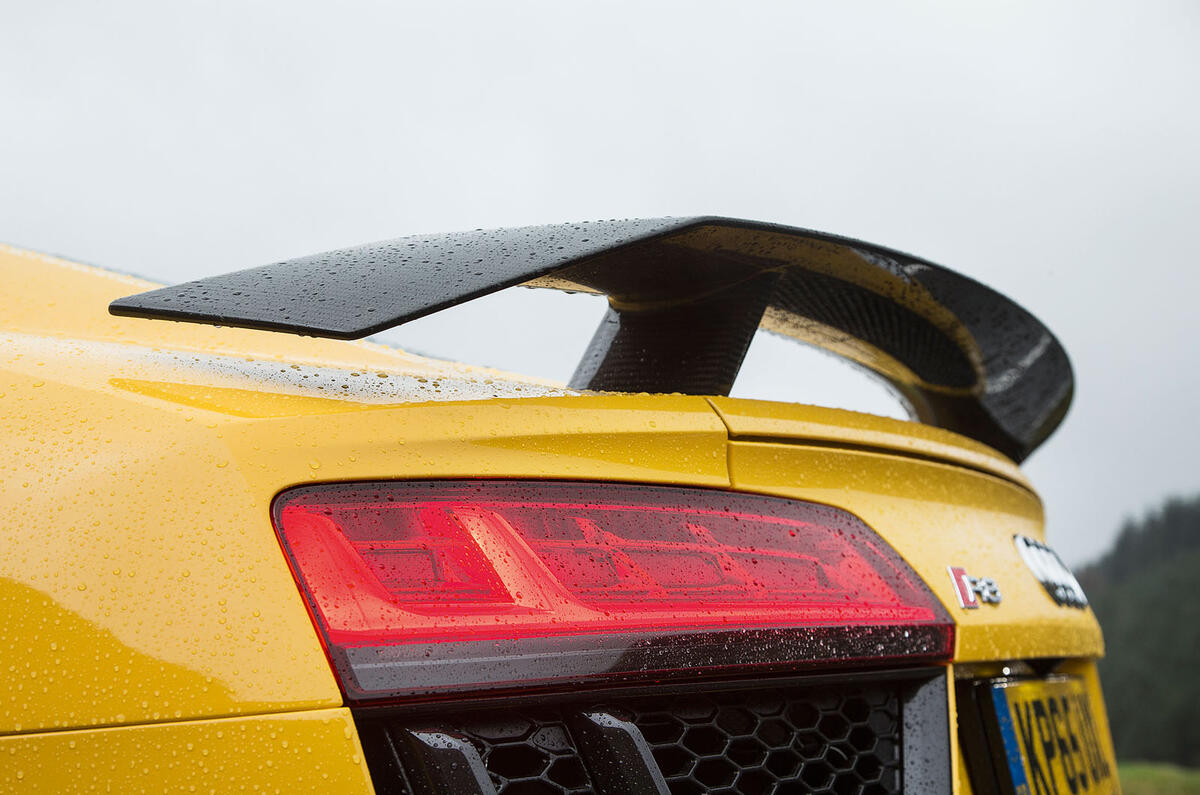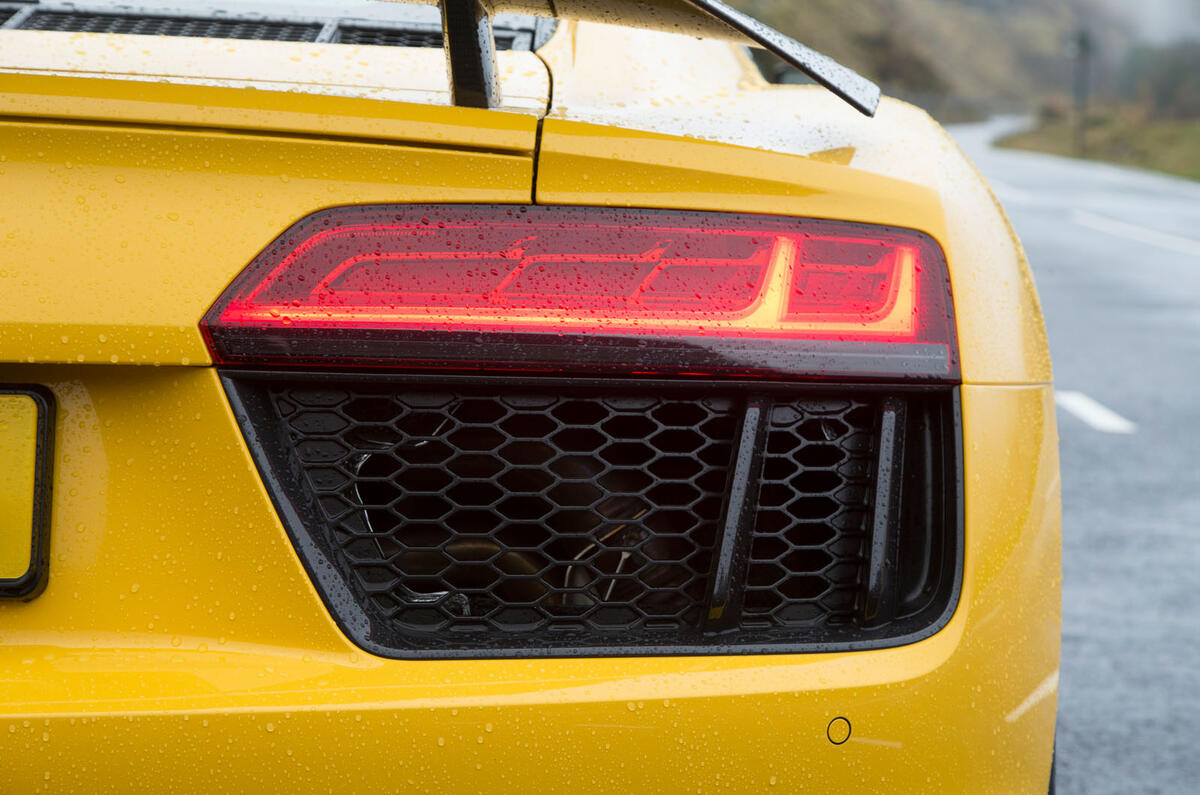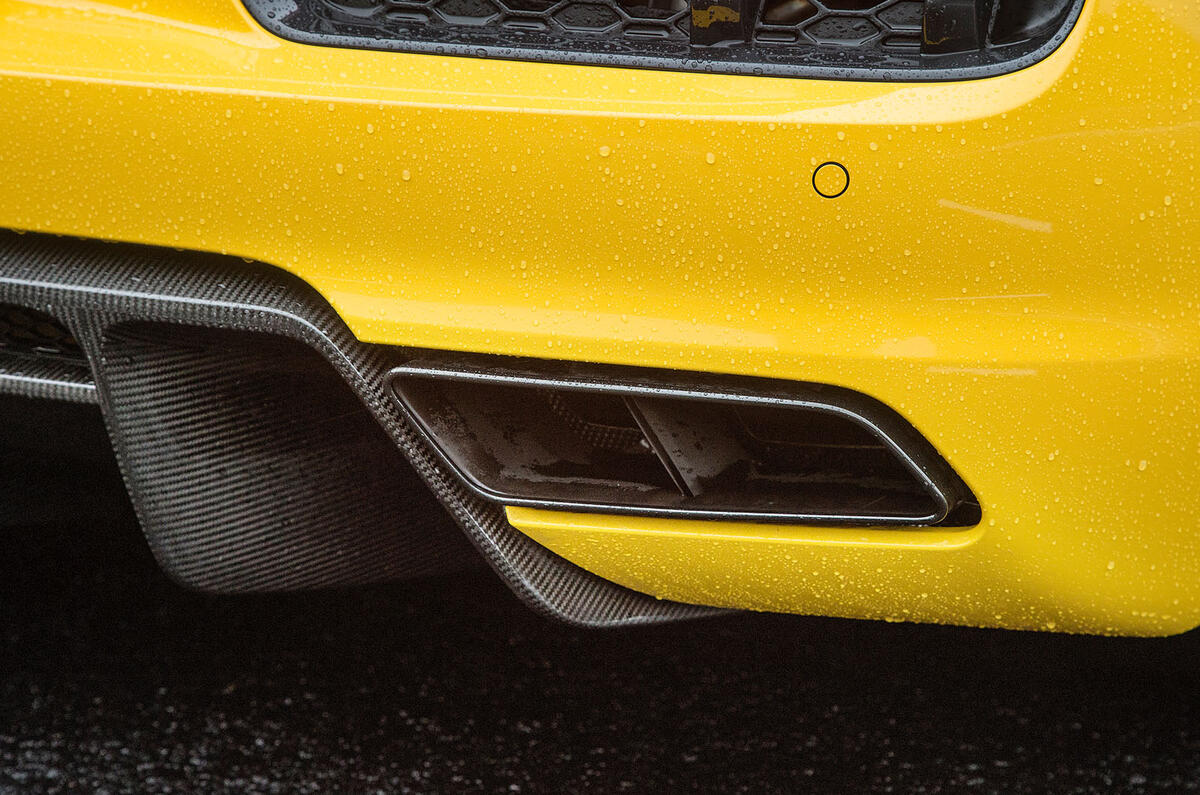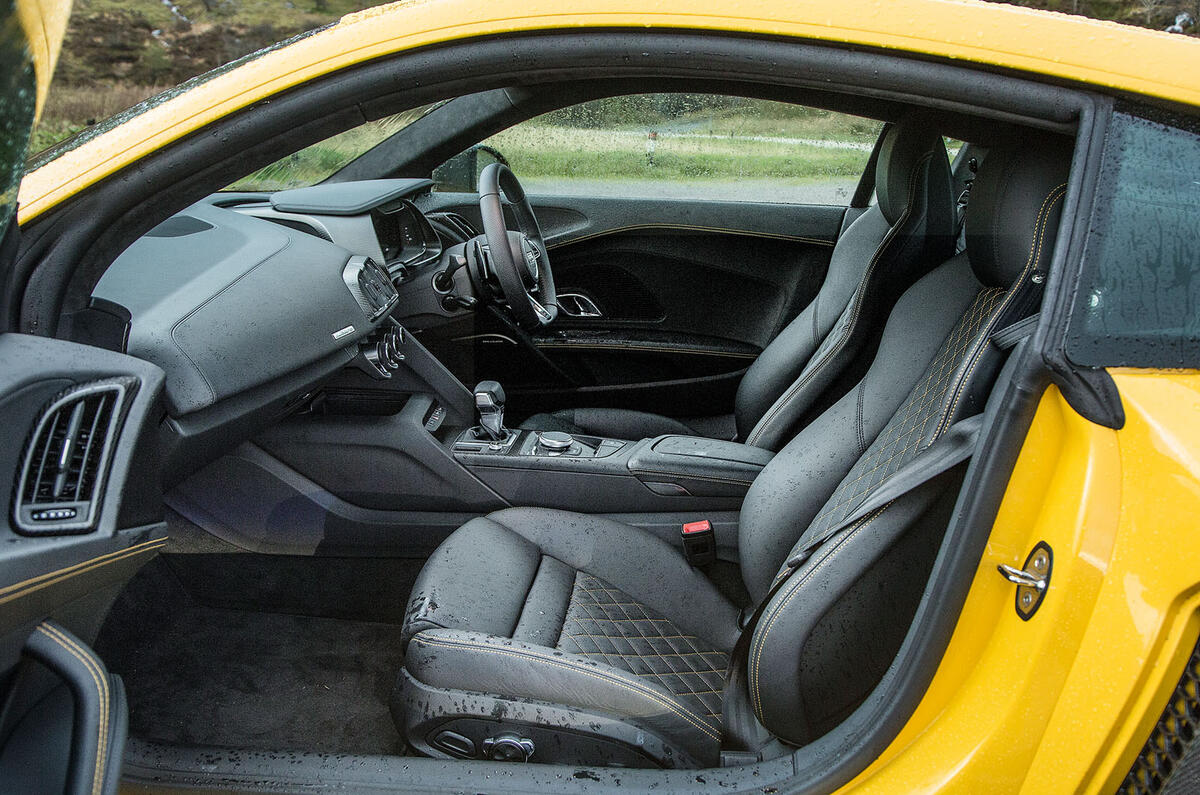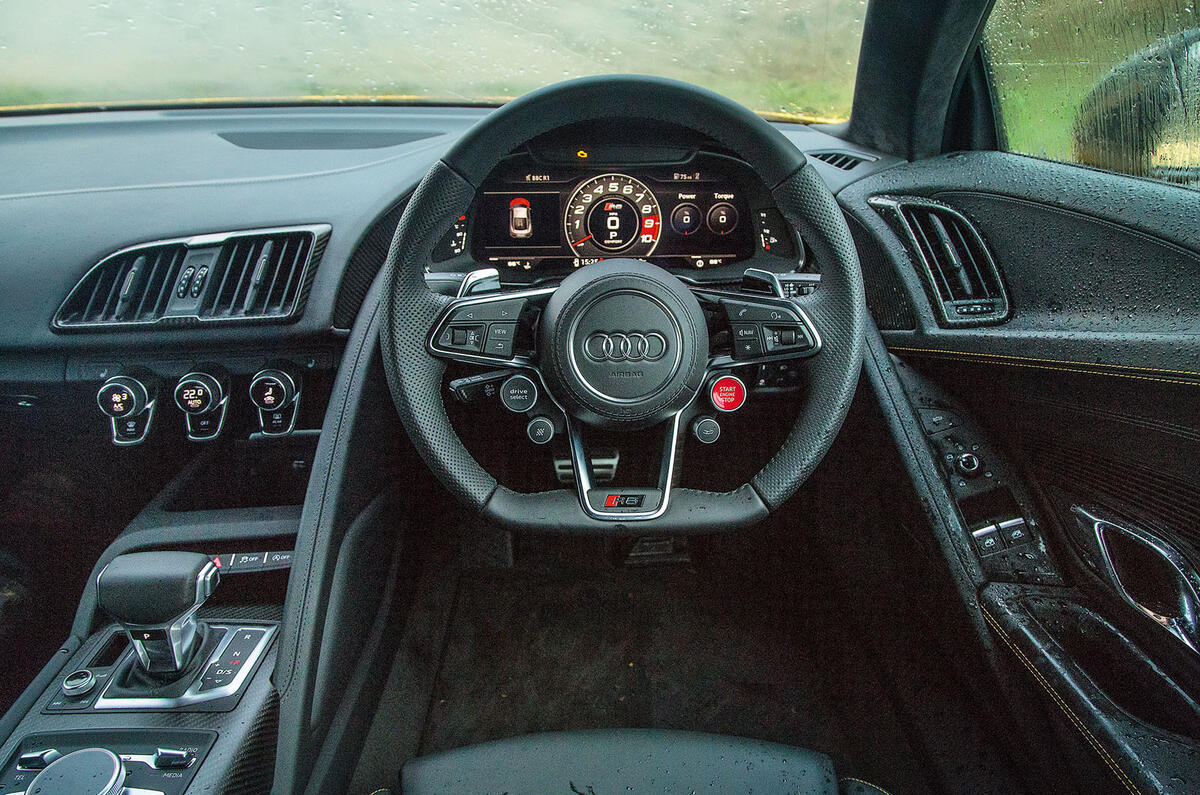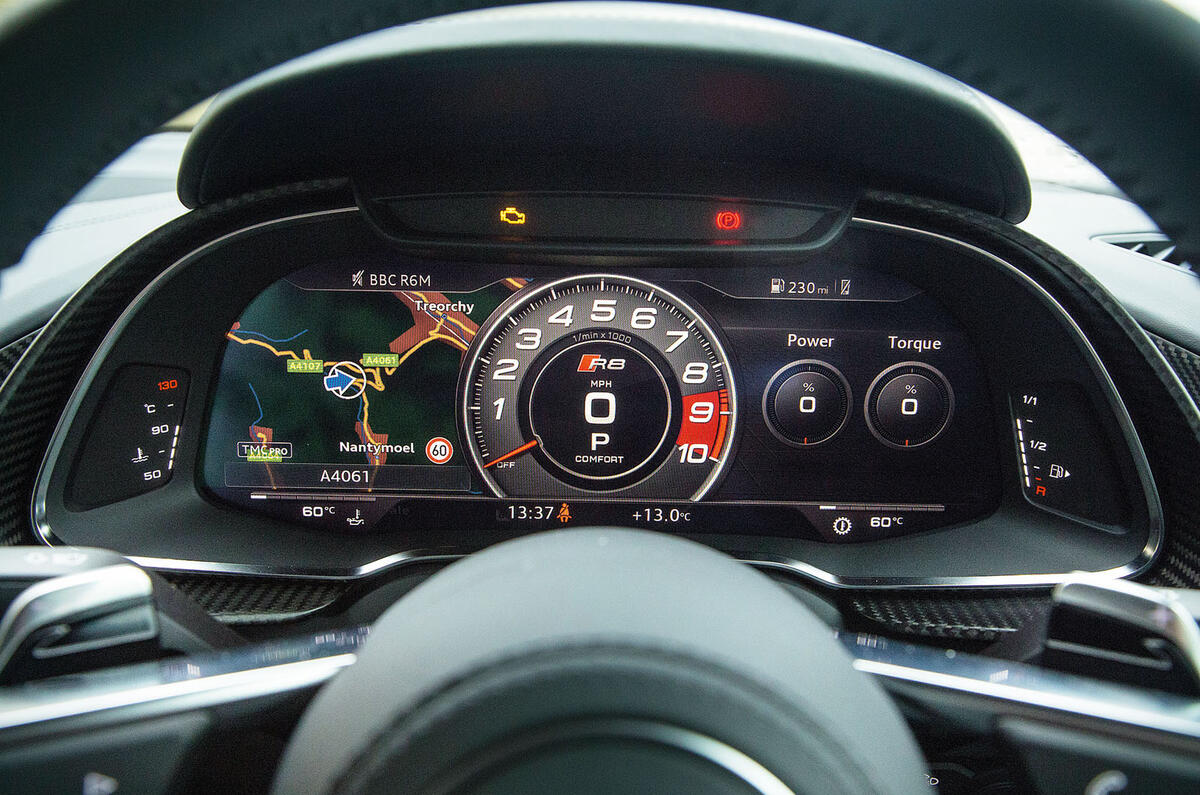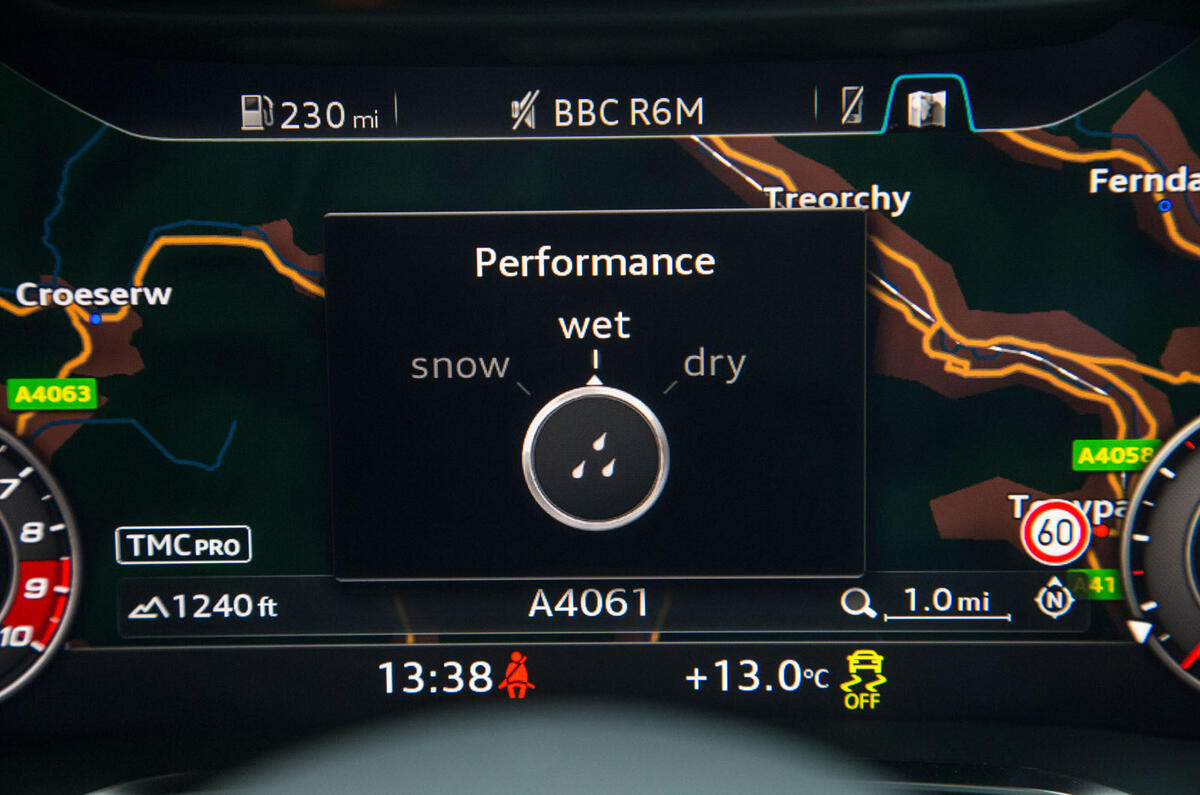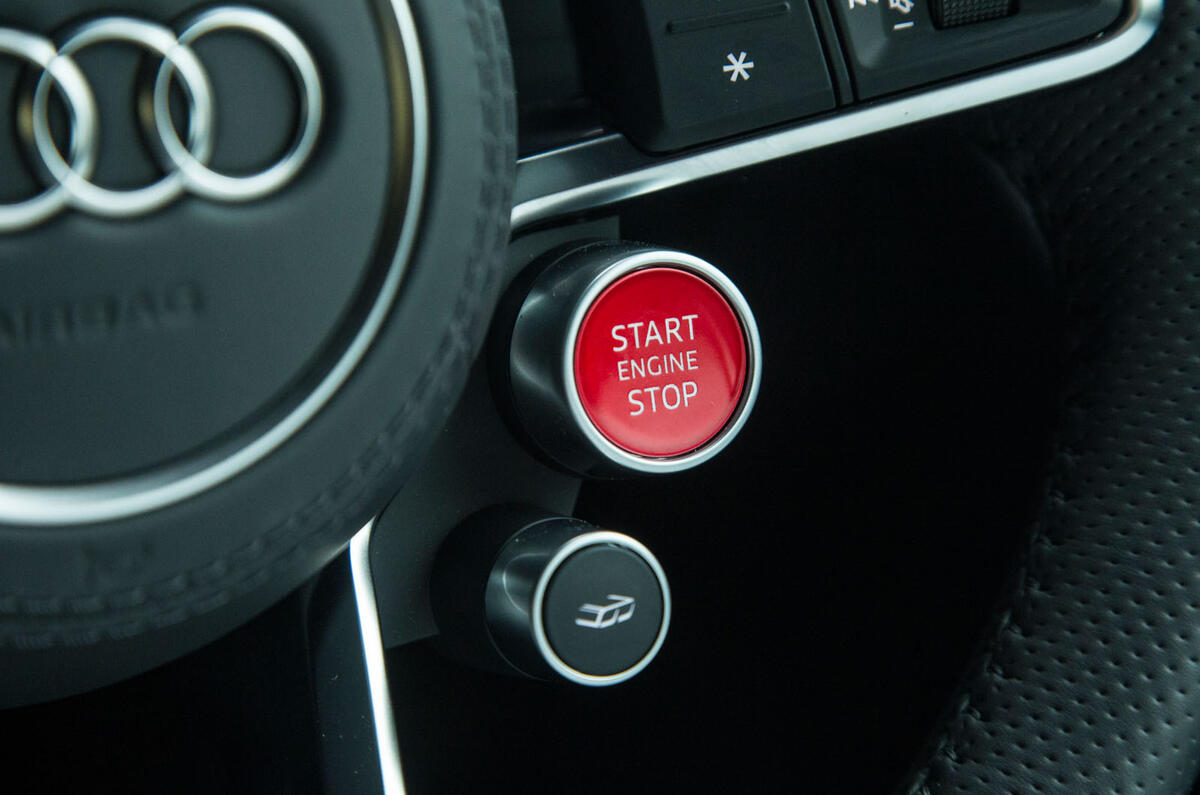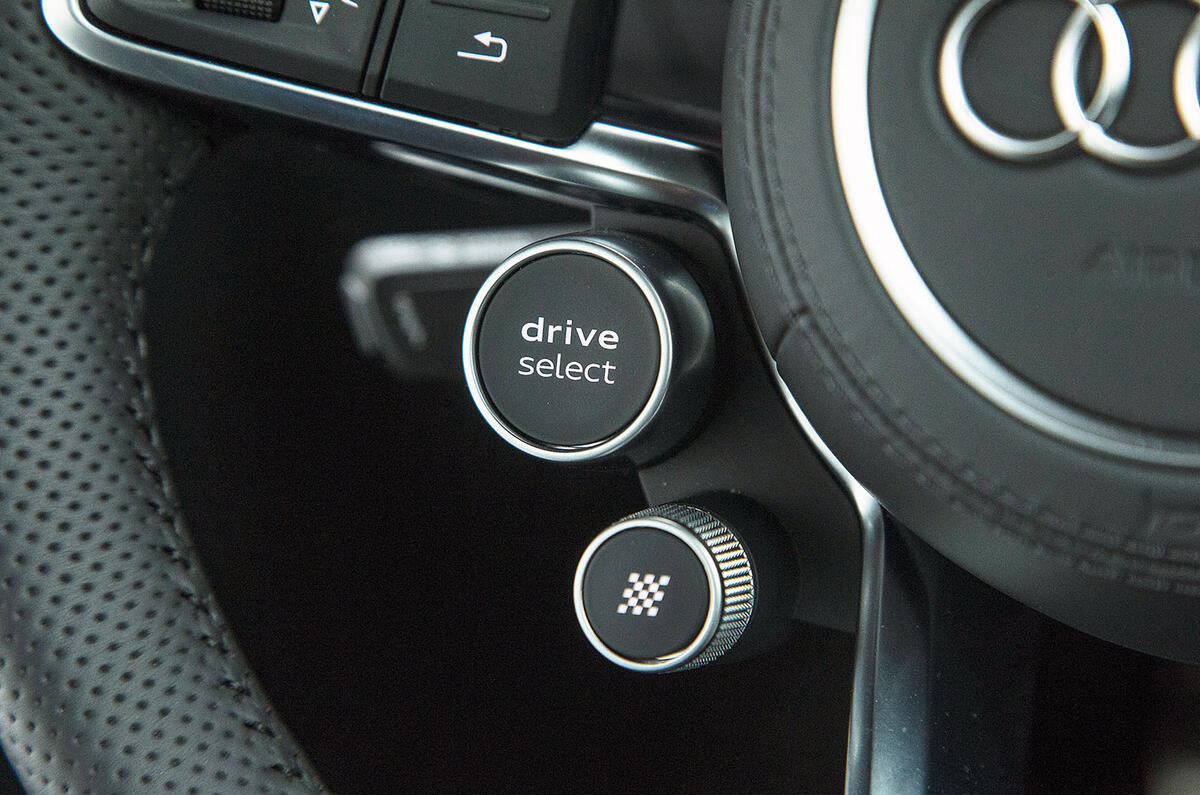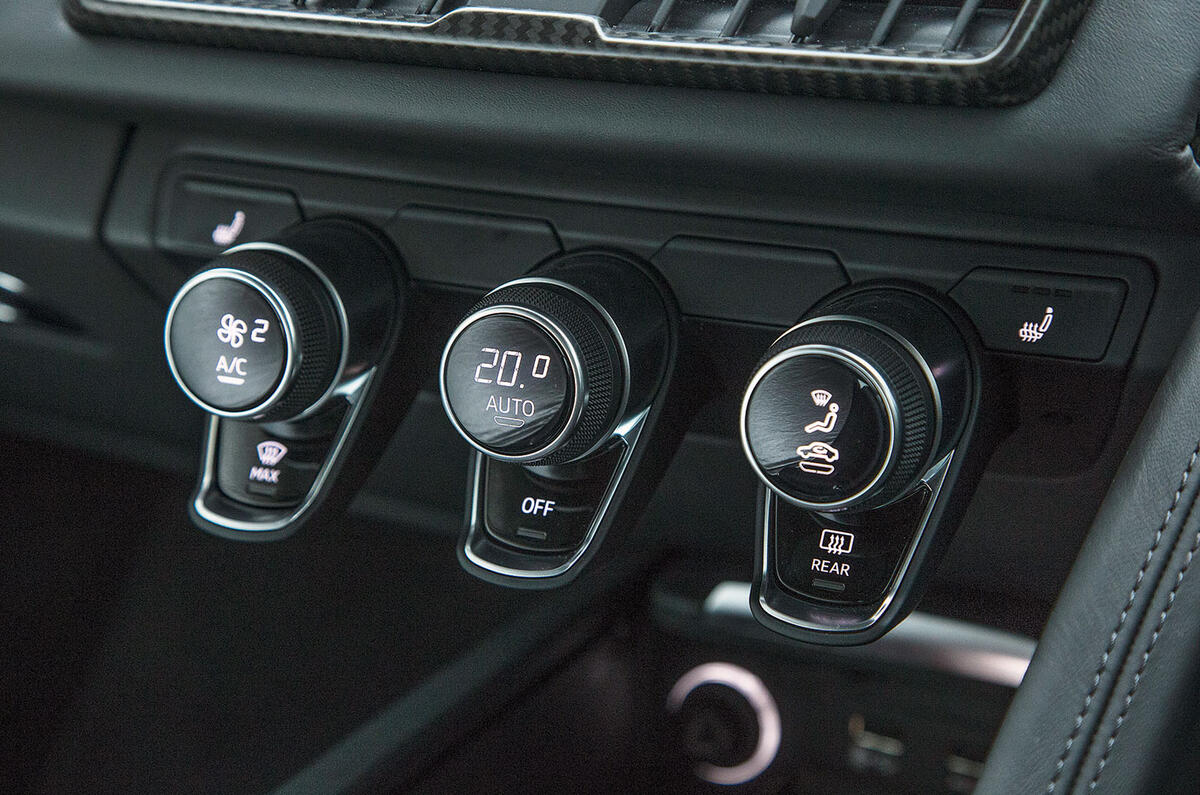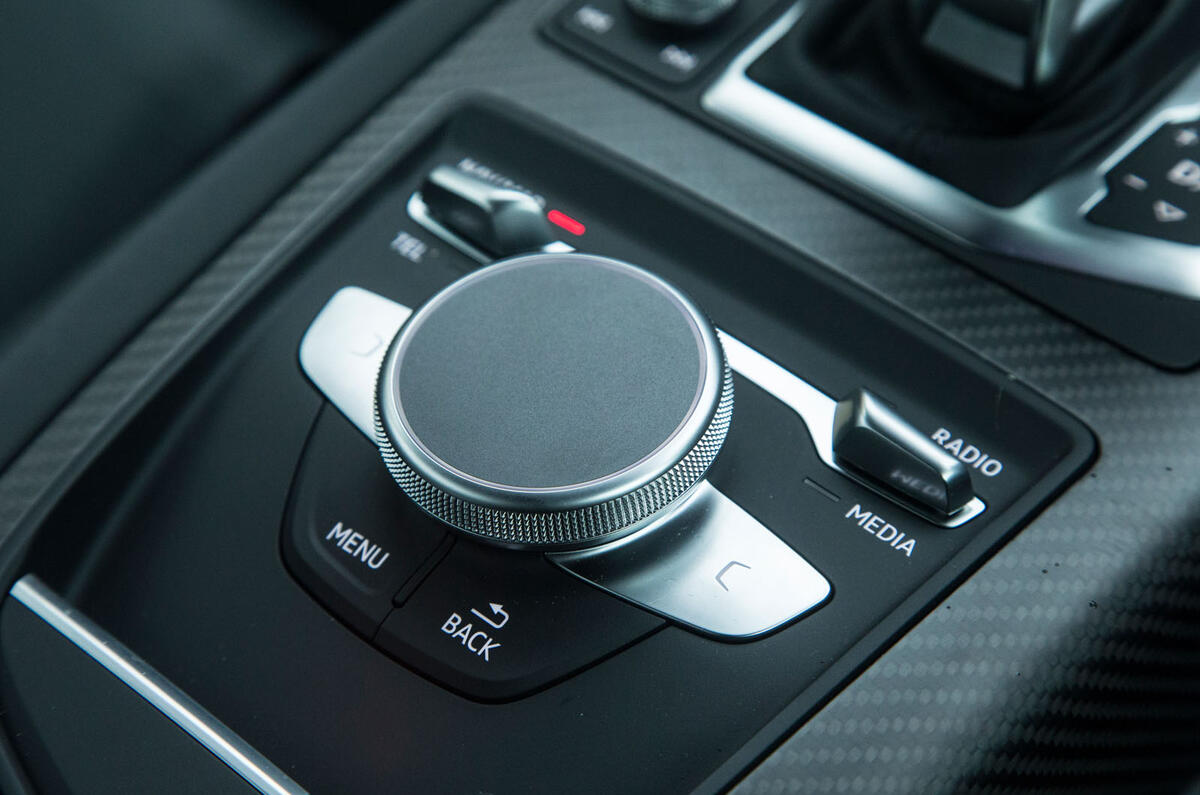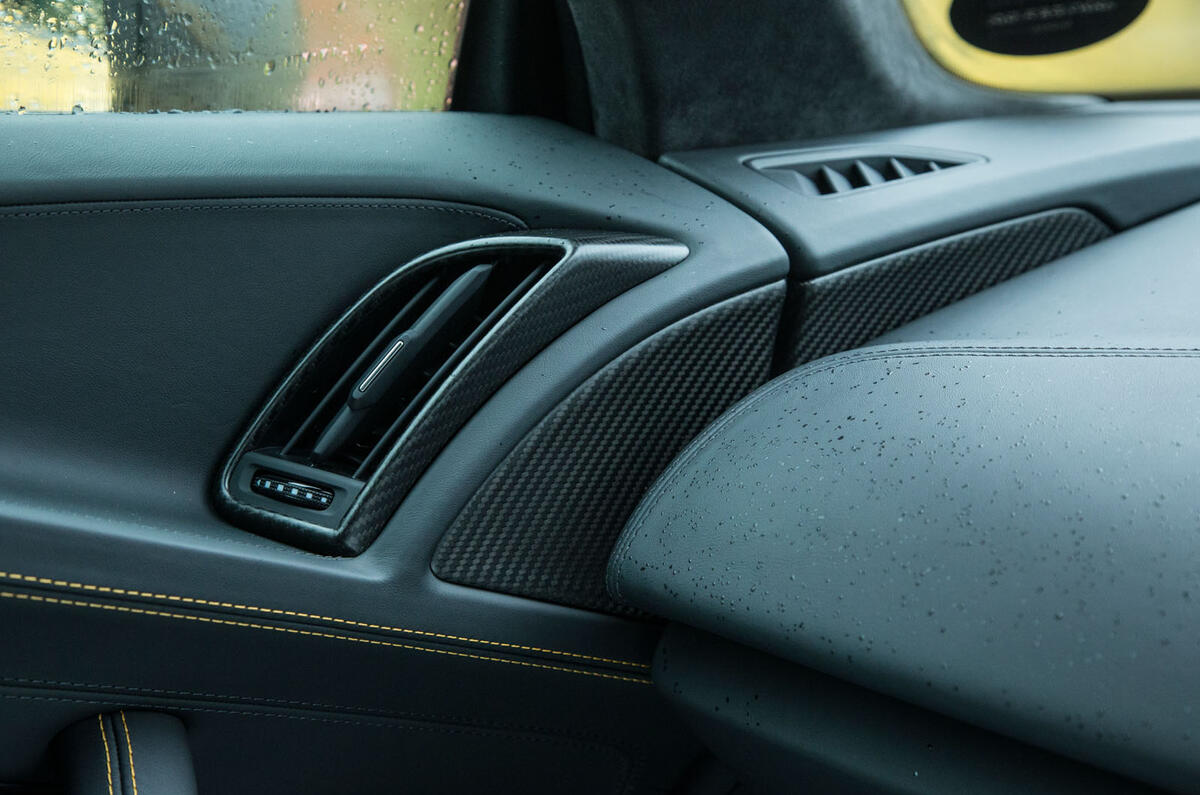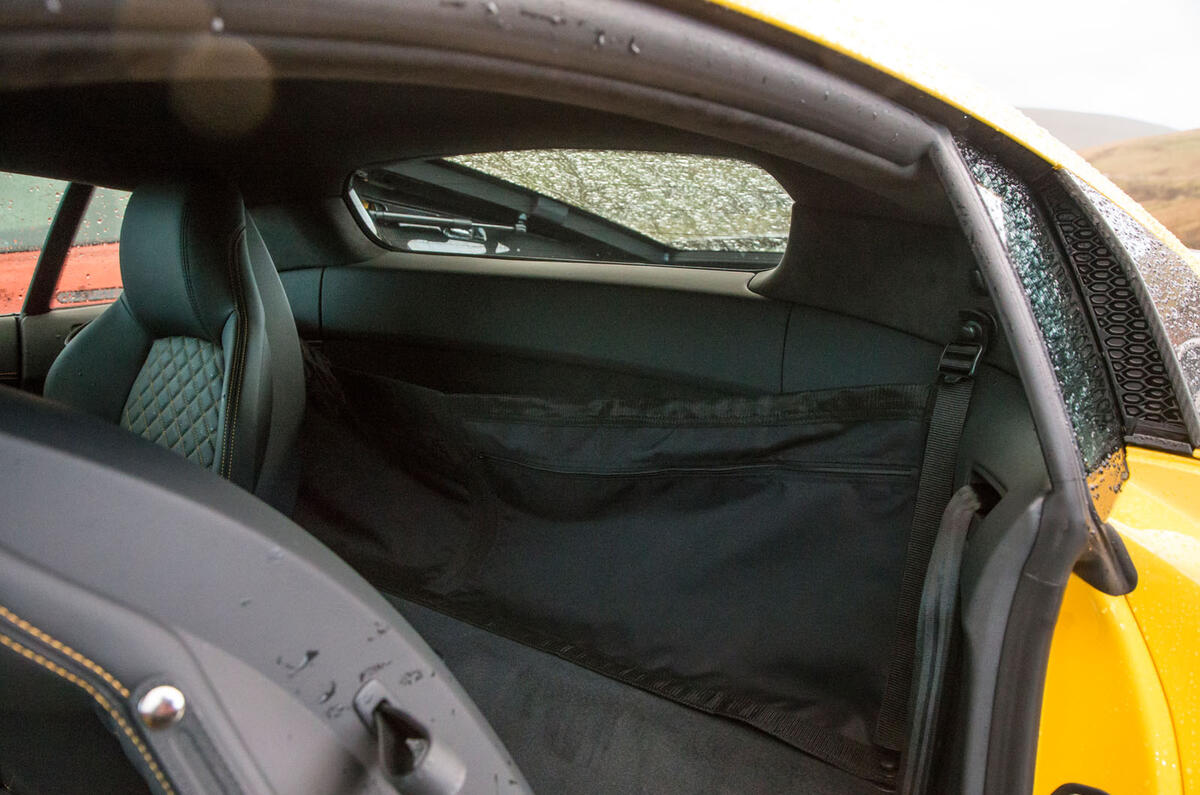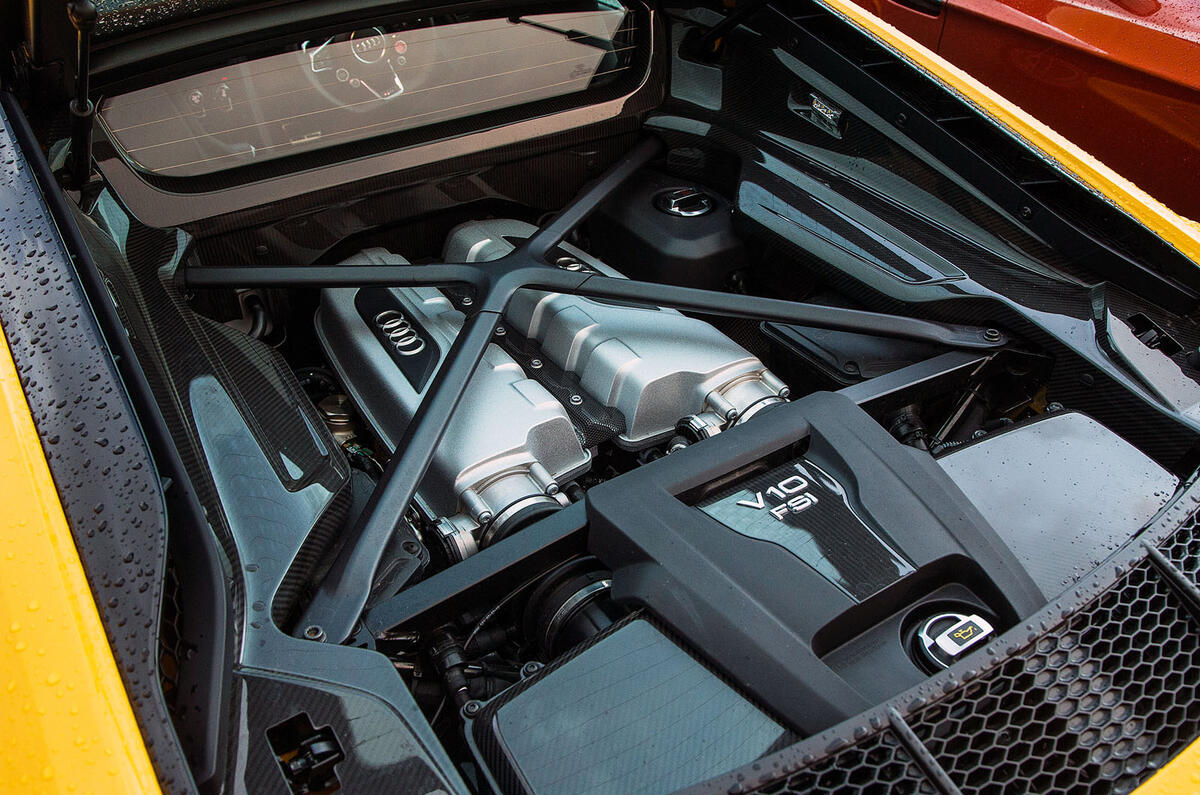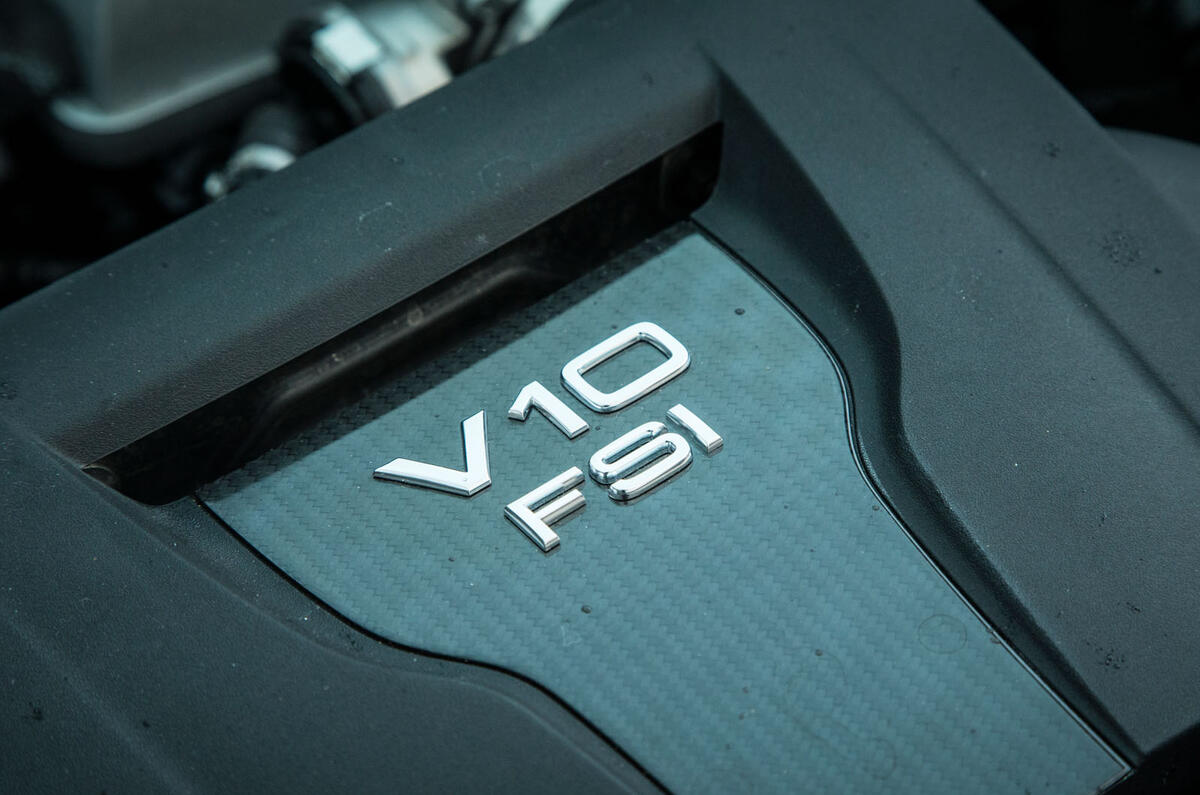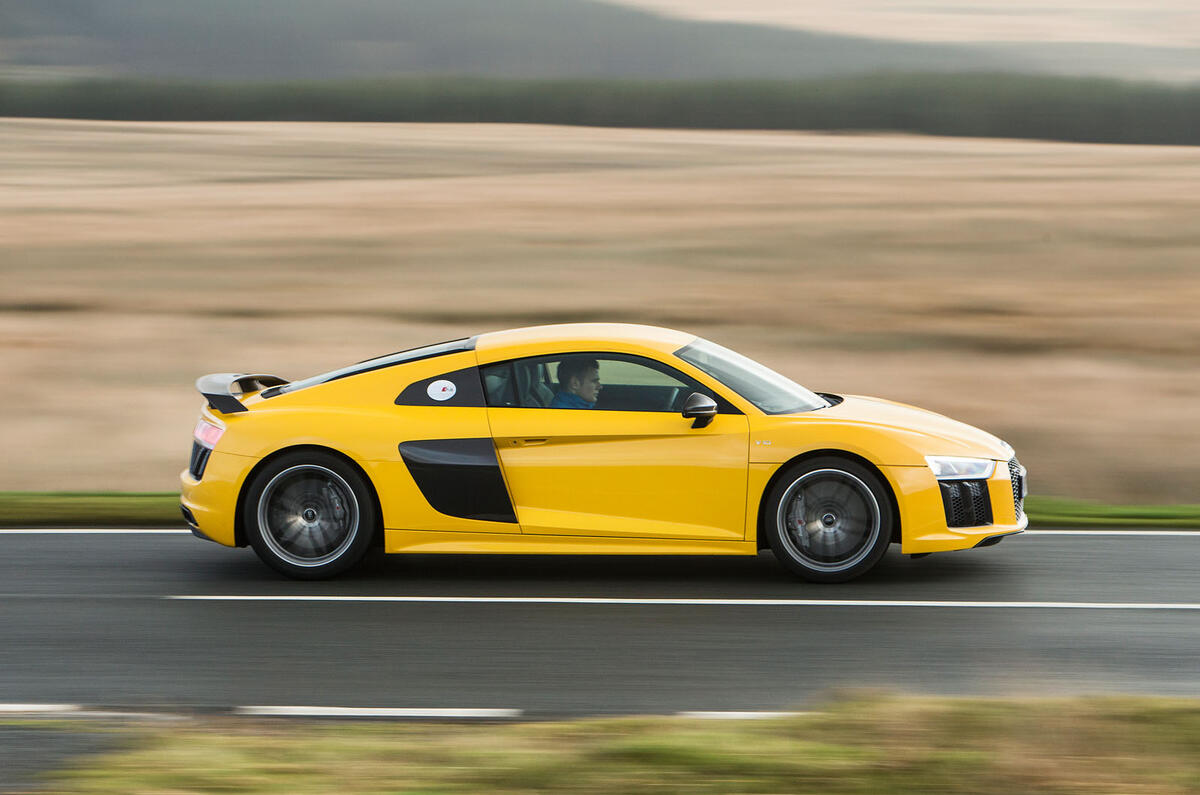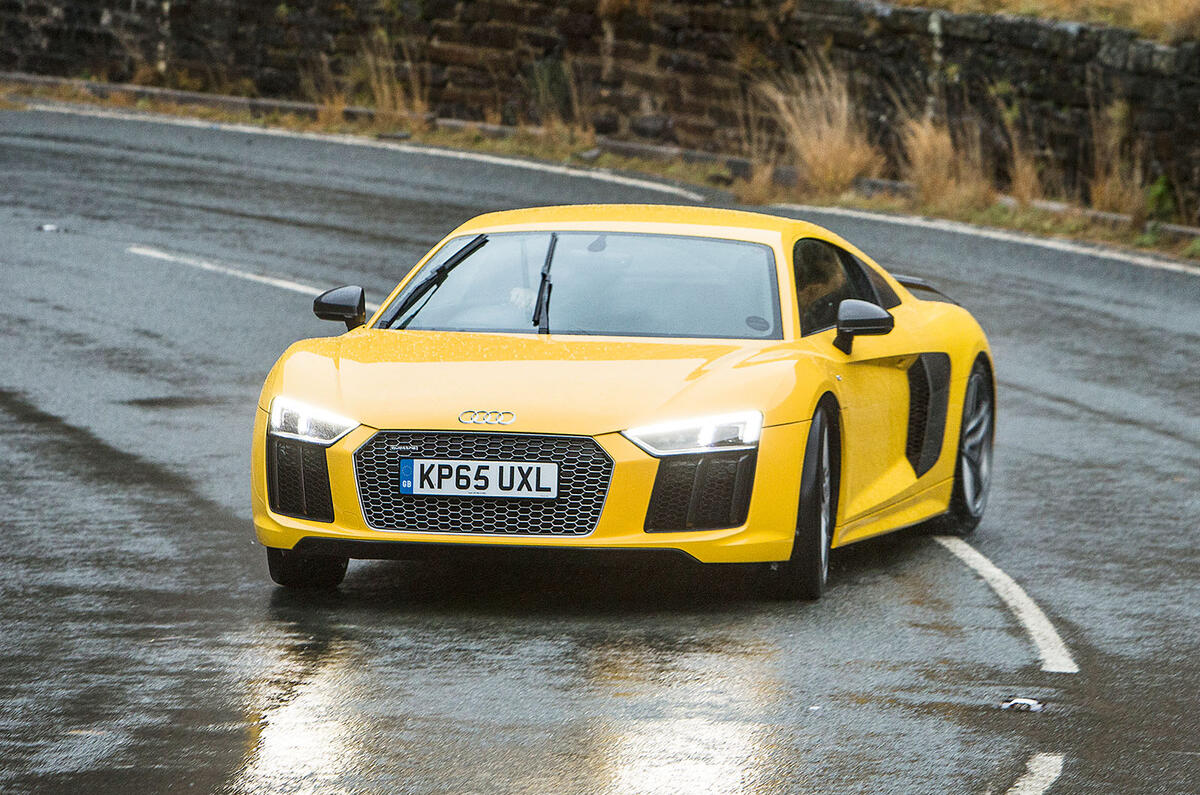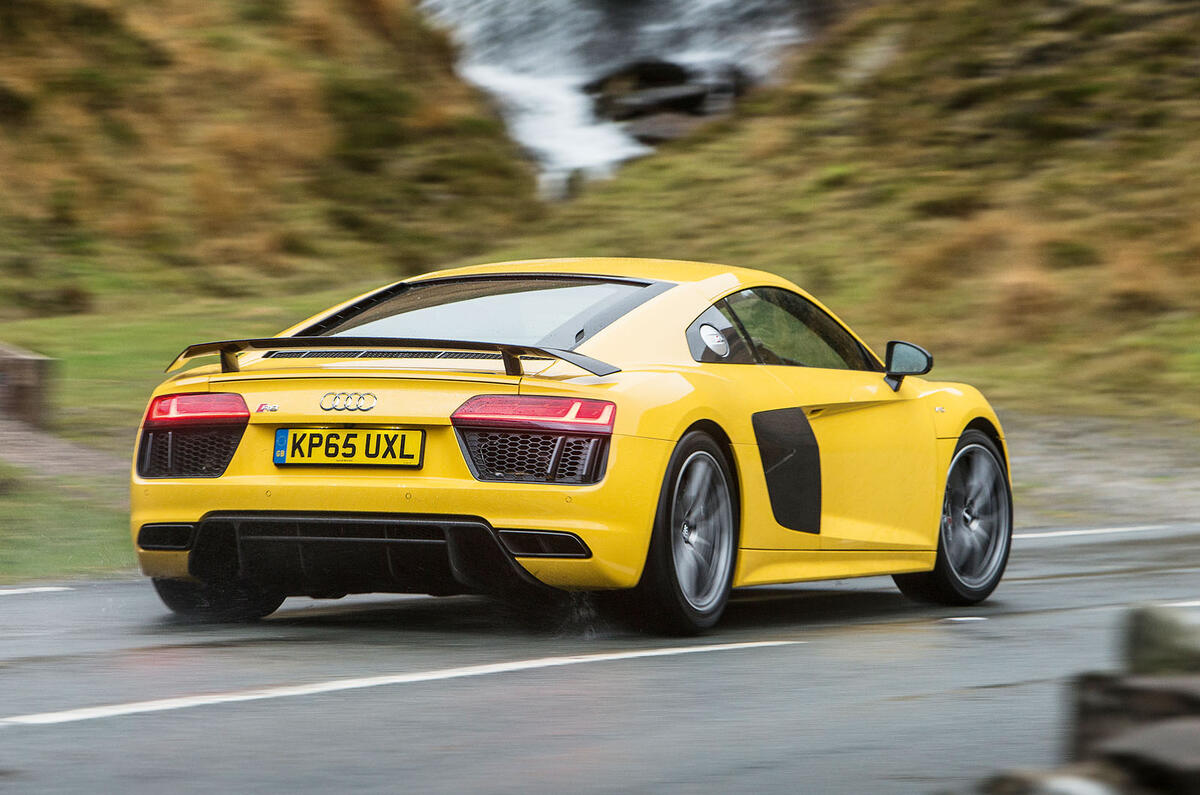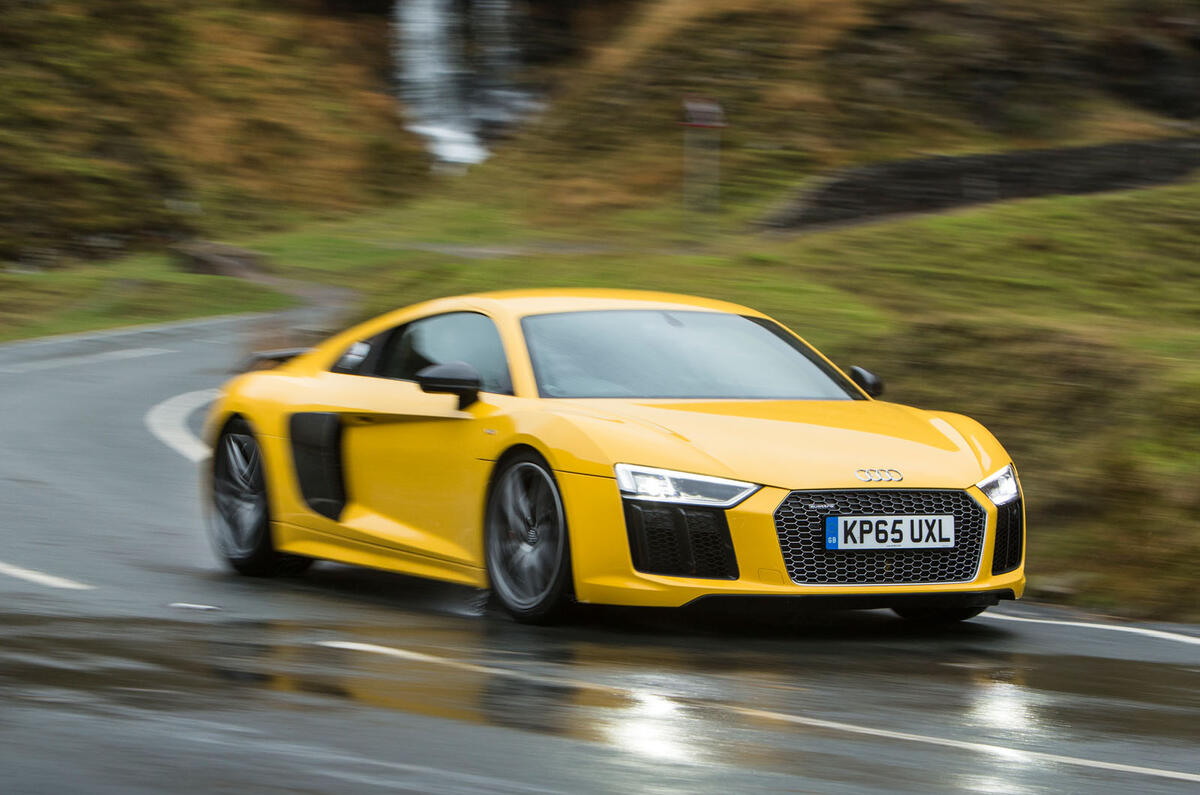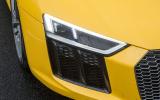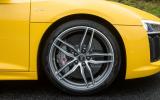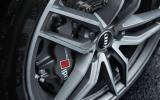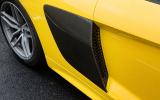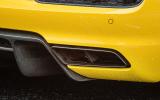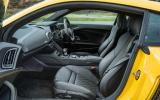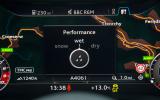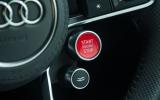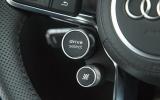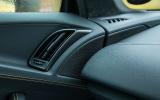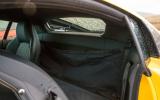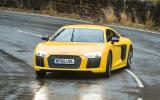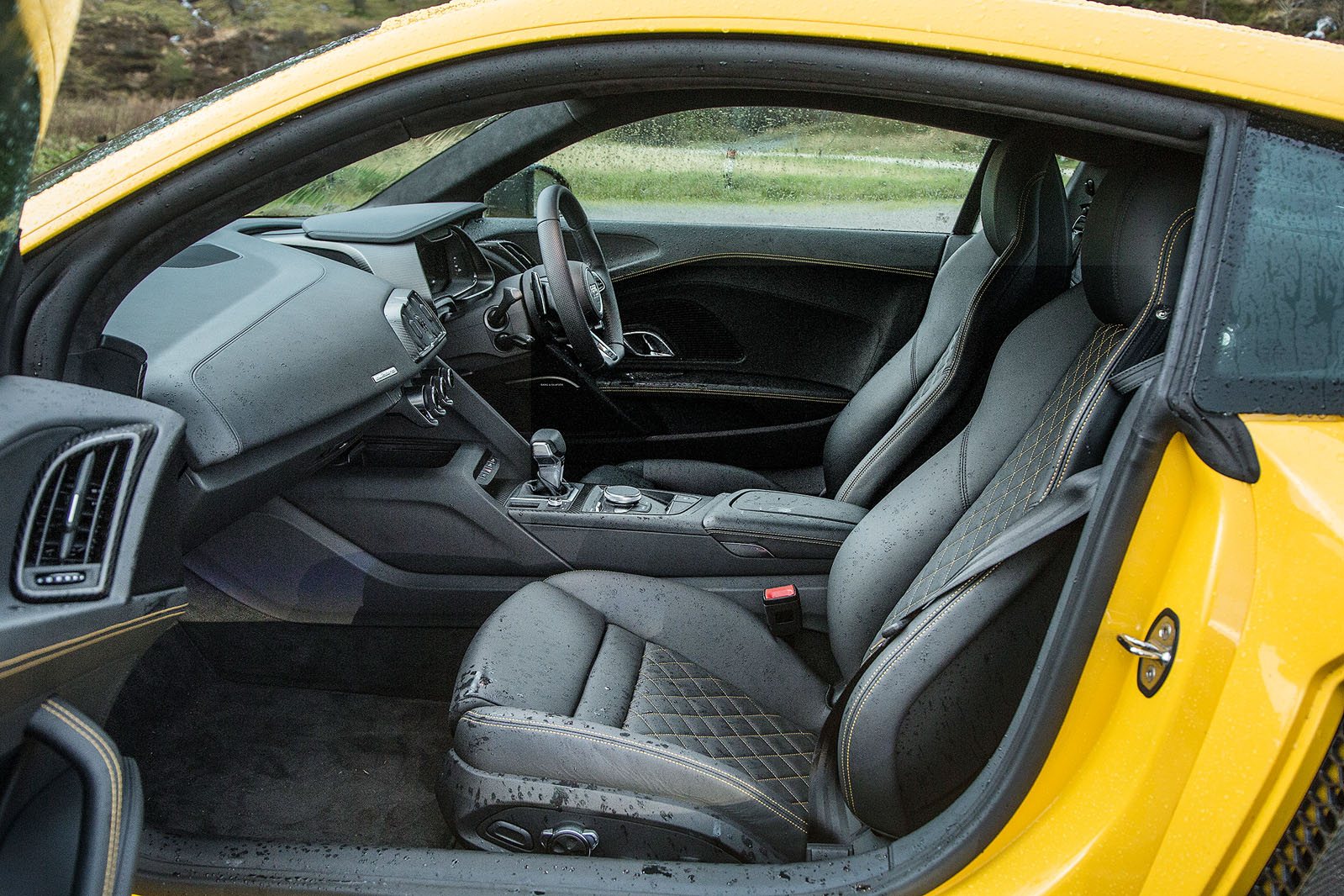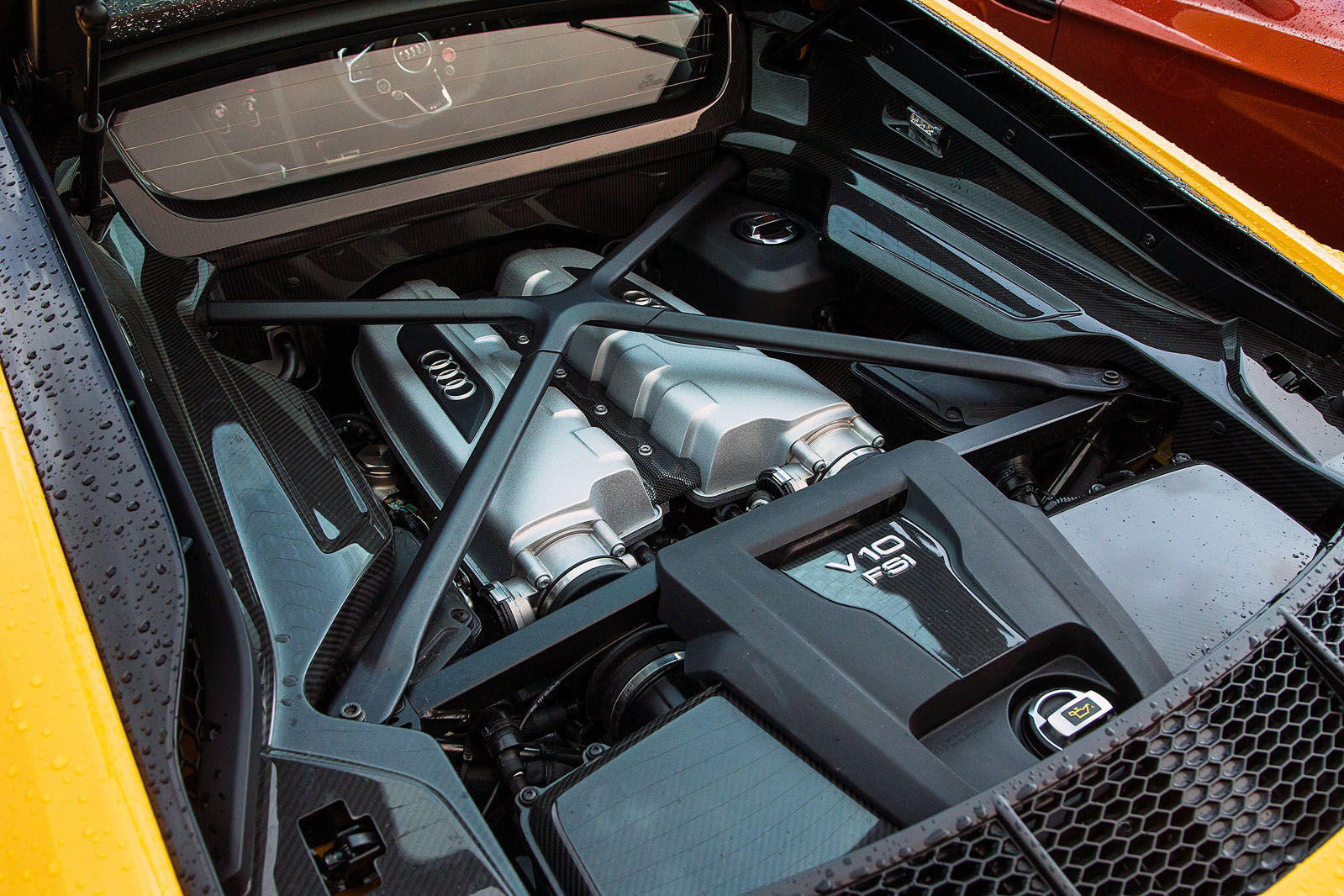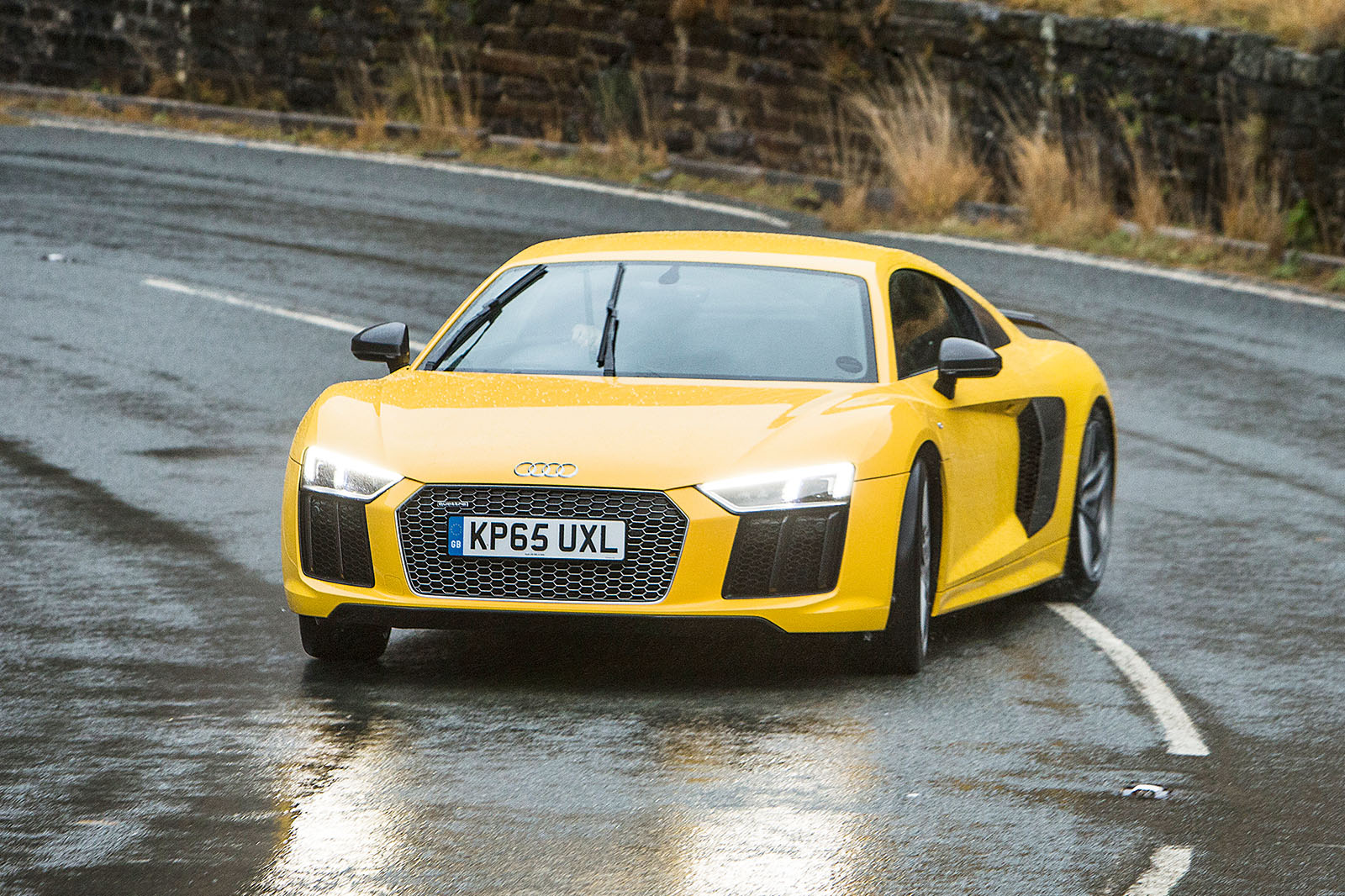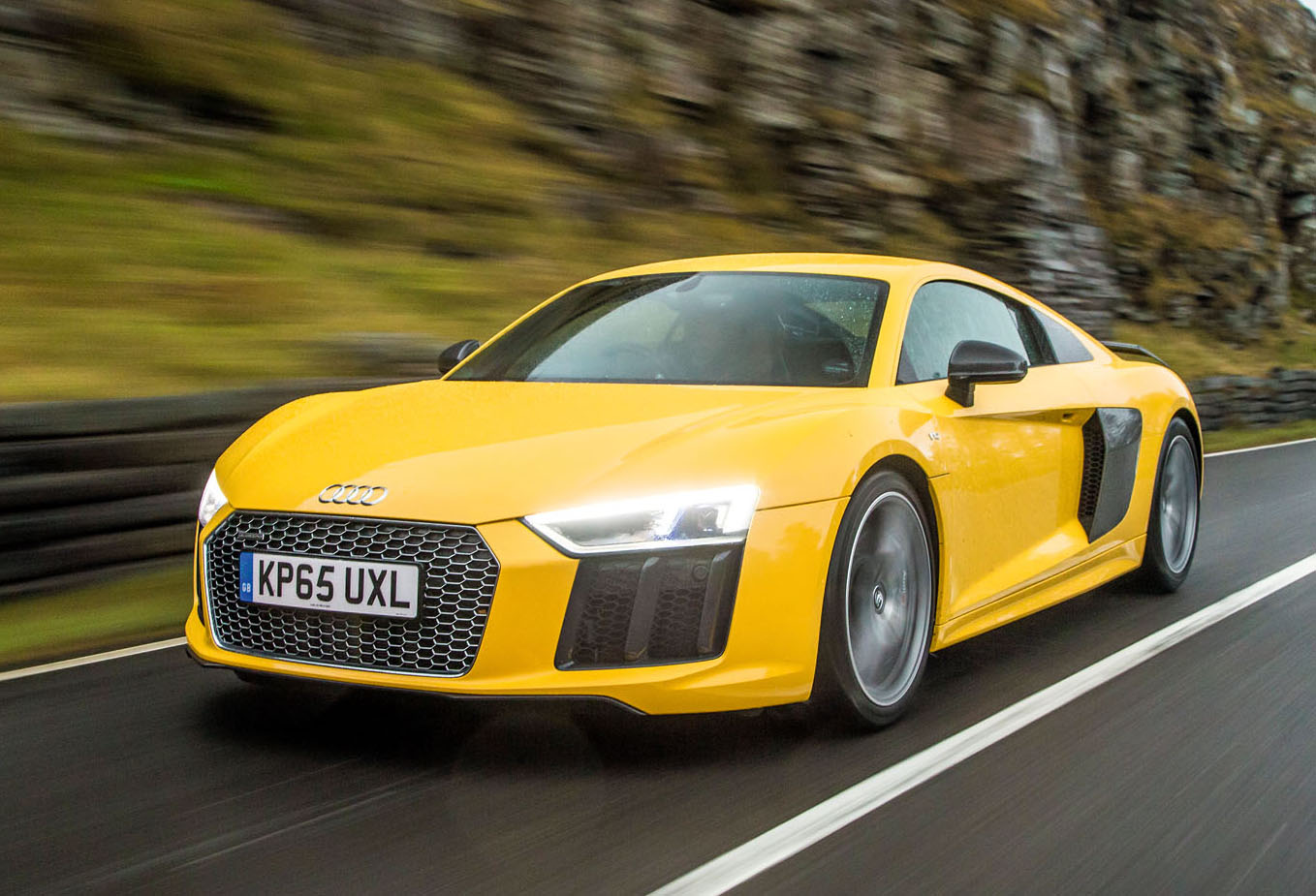To drive, the previous R8 hardly dated at all and remained compelling right up to the knockings of its long lifecycle. But the same could not be said of its interior, which had fallen beneath the high standards of its maker’s reputation.
But that negligible blot on the model’s copybook is wholly eradicated by its replacement. The look and feel of the cockpit, even its smell, have been rigorously updated to produce a clear highlight for Audi’s current line-up.
The R8’s cockpit is spanned by the ‘monoposto’, a large, curved arch of trim that borders the centre console and door trim on either side of the driver’s seat, encompassing the instrument cluster and steering wheel and intended to give the impression of being in a race car.
Really, though, the focus is now on the standard fitment of Audi’s Virtual Cockpit, which replaces the previous R8’s analogue dials with 12.3in of contrast-rich TFT screen.
The display’s flexible, razor-sharp renderings make space for the rest of the interior to maintain its glossy, uncluttered look, with nothing allowed to upset the familiar cohesion of soft-touch furnishings and brushed metal modernity.
The old R8’s steering wheel was a simple, multi-function affair. Now it’s polka-dotted with function buttons. The rather rudimentary S tronic gear selector has been swapped for one with the heft on an airliner throttle.
The centre console display has gone, of course, and with it much of the previous R8’s conventional switchgear. The Virtual Cockpit is operated via steering wheel remote controls or the latest MMI rotary interface on the centre console.
But all of this makes the R8 no more complicated to operate than the latest Audi TT; this is both the likeable thing about it and, ultimately, its limitation.
Neither the inventiveness applied by BMW to the BMW i8 nor the flair lavished on the McLaren 570S is bettered by Audi’s buttoned-down aesthetic – no matter how high the R8’s perceived quality levels may be. The R8 is a fine place to sit, and remains so for hours on end, but the same is true of virtually every other Audi product on sale. The R8’s wow factor is conspicuously short-lived.
Although it takes a little bit of getting used to, the Virtual Cockpit is one of Audi’s better ideas. For all the moments it seems to risk becoming cluttered (there’s now an awful lot of features to squeeze into a comparatively small space), the simple fact that the road remains in the same eye line is undoubtedly a boon to safety.
Eventually, usability is great, too — once you’ve cottoned on to the occasions when you really need to be scrolling left and right to find the particular option you’re looking for.
Interface aside, the R8 gets the range-topping version of the MMI system as standard, meaning that it’s about as well equipped as the class gets in terms of navigation, infotainment and connectivity. Processing speed is clearly top notch, and there’s an integrated wi-fi hotspot to go with a variety of Audi online services. For audiophiles, a 13-speaker Bang & Olufsen sound system is on the options list.
As for the equipment levels, the V10 Coupé and Spyder get 19in alloys, LED headlights, dynamic rear indicators, automatic lights and wipers, autodimming, heated and folding wing mirrors, heated Nappa leather seats and climate control, while those concerned about dinging their precious super car will be pleased to know that front and rear parking sensors come as standard too.
Opt for the more bullish V10 Plus and expect to find tauter suspension and springs, ceramic brakes, adaptive headlights, fine Nappa bucket seats and stainless steel pedals.


